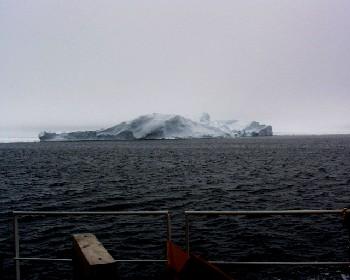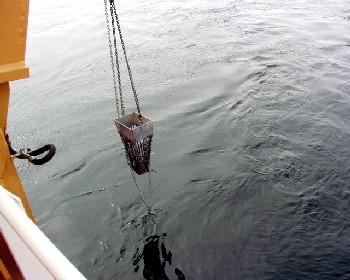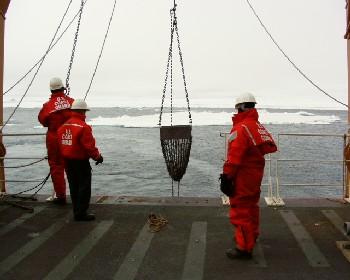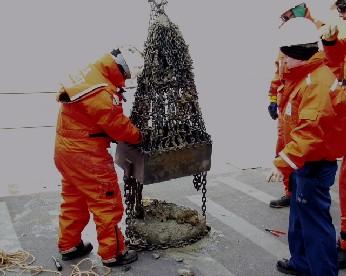15 June, 2000
Ocean Going Rock Hounds
Dredge, what an unlikable term. It sounds harsh, and in many ways
dredging is a harsh way to sample living organisms, as well as non-living
objects at the bottom of the ocean.
Dredging is rarely used by itself for scientific purposes, because it
samples only who or what is home at the time of the dredge. In conjunction
with other sampling methods, dredging can give a scientist a general idea of
the characteristics of a given area.
Basically there are two major types of dredging operations. When living
organisms are sampled using this method it is called trawling. Trawling
involves dragging a device designed to collect organisms near the bottom of
the ocean behind a ship. It may also collect benthic creatures that live in
the upper few centimeters of the mud that covers the ocean floor. One type
of trawl is called an otter trawl. It has "tickler chains", chains that drag
over the ocean floor to stir up organisms. It is also composed of a
"tickler board", which channels the organisms into the collecting unit.
Today, we tested the ability of the ship to run a rock dredge. Before we
let out the dredge, the scientists double checked the wenches and used an
instrument known as SEABEAM to map the floor of the ocean. A rugged terrain
could cause the dredge to get hung up, a dangerous proposition when it is
attached to the ship by heavy wire cable. To avoid such an event, SEABEAM
was used. Basically, the instrumentation sends out a "ping" sound from the
ship. Computers on the ship record the time of the ping and the return of
its echo from the bottom of the ocean floor. Based on the amount of time it
takes the sound to travel to the bottom and back, the depth of the ocean can
be determined. As I mentioned earlier, it was important for us to find a
fairly level area to dredge. We found such an area with a depth of 1,000
meters (well over 3,000 feet). Rock dredging is done for similar reasons as
the trawl. Its purpose is to give an idea of the general geologic makeup of
an area, in conjunction with other surveying techniques, like core sampling.
This type of survey provides a window into the geologic history and
processes of the area, which can answer basic questions. How old are the
rocks? Has the area been influenced by volcanism? What classes of rocks
are present? For the dredging operation we performed today, we collected a
mixture of rock classes. Both sedimentary (made up of sediment "glued"
together) and metamorphic (rocks in which the chemical and crystal structure
has change due to intense heat and pressure, one rock changing into another)
rocks were found. One could guess that the sedimentary rocks, which
normally form in shallow water, have been transported to the 1,000-meter
depths by the large icebergs, which calve off of glaciers from the enormous
ice sheet of Greenland.
Along with the rocks, a few samples of an unknown living organism were
found. We also brought up a bit of mud, which was very fined grained, like
slip used by pottery makers. During the next leg of the Healy science
trials, we will be delving back into the deep to do another dredge and
getting knee deep in mud! I can't wait!

A HUGE iceberg we passed while working on the deck. (9)

A SEABEAM image of the ocean floor, the ship, and the ship's path. (1)

Sifting through the mud in search of samples. (7)

Sending the rock dredge down. (3)

An unknown organism brought up from 1,000 meters below the ocean's surface! (8)

Spraying water to separate the items collected from the fine-grained mud. (6)

Bringing the dredge up from the ocean floor. (4)

Dumping the contents of the dredge on deck. (5)
Contact the TEA in the field at
.
If you cannot connect through your browser, copy the
TEA's e-mail address in the "To:" line of
your favorite e-mail package.
|
